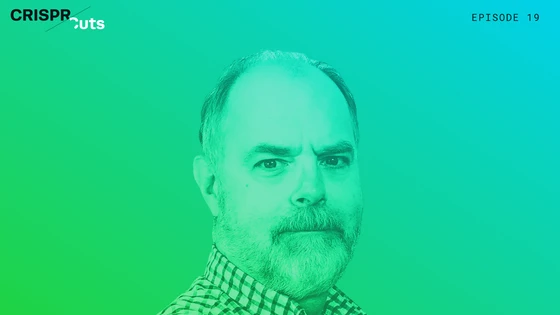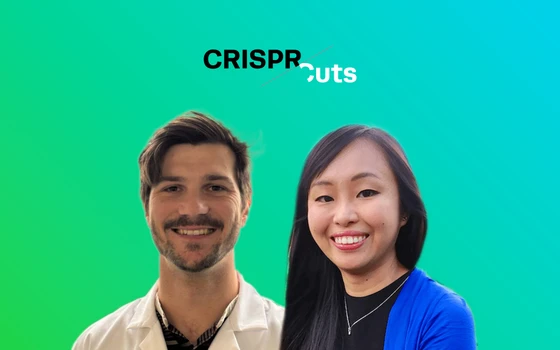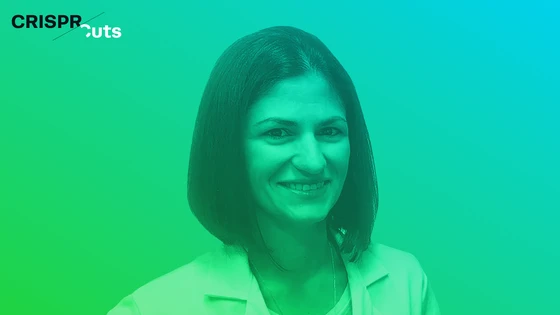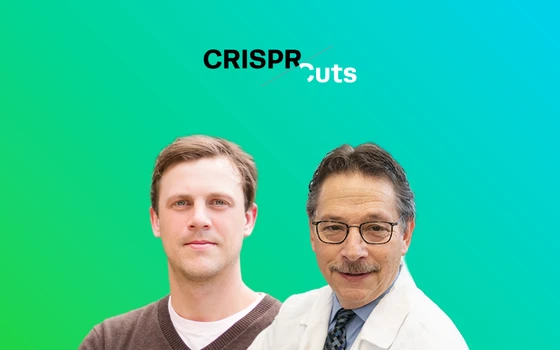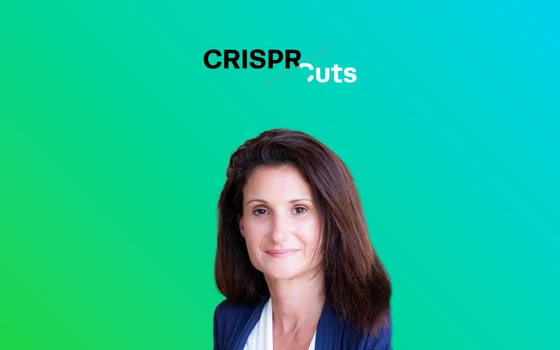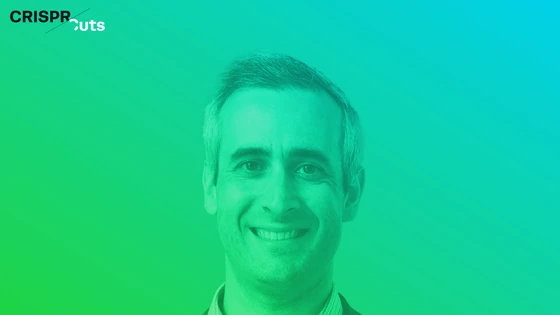Overcome Barriers of Gene Editing in iPS Cells
Learn how Synthego can deliver high-quality iPS cells with your desired edit, guaranteed.
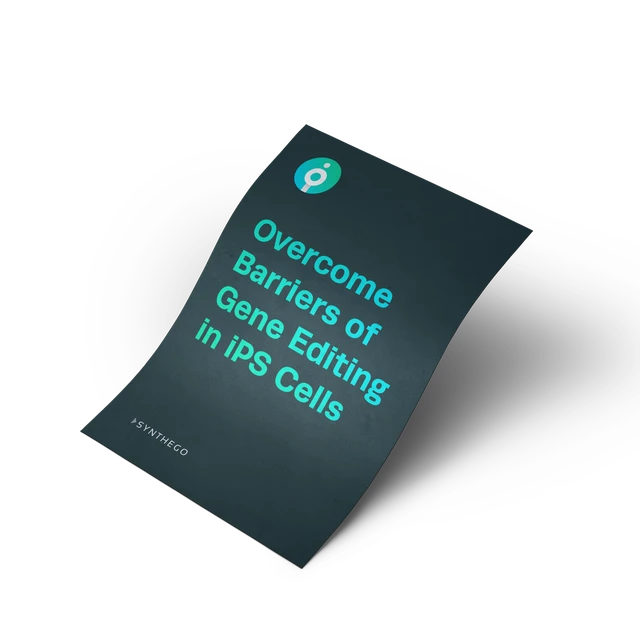
Dr. Bill Skarnes is a Professor at The Jackson Laboratory. His lab focuses on studying gene function and disease modeling in human stem cells. Recently, CRISPR editing in stem cells has emerged as a promising field with great potential in development of therapies.
In this episode, we chat with Dr. Skarnes, who recently joined Synthego's advisory board, to get all our questions about this upcoming field answered. So read the following post or tune into the episode, if you prefer listening. The choice is yours!
Dr. Bill Skarnes Chats About the Past, Present, and Future of Gene Editing in Stem Cells
Minu Prabhune: Could you tell us about your professional background and how you got into stem cell research right from your Ph.D.?
Bill Skarnes: When I did my Ph.D. in the mid-eighties, these new stem cells—called embryonic stem cells—were discovered in the mouse. And these were hugely influential in my career because the very fact that you could work with and genetically engineer a mouse embryonic stem cell, and use that cell to make a mouse with that genetic mutation was so fascinating to me.
I am fairly new to human stem cells.
"Most of my work in the past has been with mouse stem cells, but I really see the future in human stem cells as the best model cell to study development in basic biology in humans. "
Minu: After you started working in stem cells, there were a number of programs that you were a part of, including the BayGenomics program. Could you tell us a little bit about that project?
Bill: Gene trapping was something that I developed as a Ph.D. student. When I took my first job in the Bay Area at Berkeley, we really wanted to use this technology to generate thousands of mutations in the mouse to understand the function of every gene. And BayGenomics was an NIH-funded program with colleagues in the Bay Area, which attempted to generate thousands of these mutation-bearing mouse embryonic stem cells.
So that was the first large scale project that I was involved with. I think it was very successful, but the technology was limited. We could only cover so much of the genome and we realized later that we needed better tools if we want to really make a complete set of mutations in all genes in the mammalian genome.
Minu: When you were working on these projects, obviously you must have required gene editing tools. Fast forward to now where you have CRISPR, which makes things much easier. Can you talk about the transition and how it was for you?
Bill: It’s really interesting. Mouse embryonic stem cells is one of the few mammalian cell types that you could actually engineer efficiently. A lot of work from many different labs went into developing the best ways to target genes in the mouse, not using CRISPR or any new tools that we have now. And it became pretty efficient. About 40% of the cells from any given experiment on average would be correctly targeted. That's pretty efficient, but it's only achievable in mouse embryonic stem cells.
Next, people tried to do this in human induced pluripotent stem or human stem cells, and the efficiencies were so low that it wasn't even worthwhile trying those experiments until CRISPR came along. So, what CRISPR has done is it has made any cell type that you can culture in a dish, amenable to genetic engineering. But 30 years before this, there were very few cell types that could be edited with that conventional technology.
Minu: In one of your recent methods paper, you covered how you can improve homology-directed repair (HDR) outcomes and go for scarless editing. So, could you just talk about the concept of scarless editing and why is it important?
Bill: So, to understand a disease, you have to make the same mutation that you find in the individual. And that is often a single nucleotide change. Now, to model disease accurately, you want to only make that single nucleotide change and nothing else because if you introduce other kinds of mutations, those mutations could confound the analysis of the model.
So we want to be as strict as possible and only make the change that you find in the human disease individual and nothing else, which requires scarless mutation. It's a technical thing that if you just make a single nucleotide change in a gene, it will be subject to re-cutting by the Cas nuclease because it's still recognizes with one base change, so that reduces the efficiency. So there is a challenge in making scarless mutations that faithfully recapitulate the disease allele because of this property of Cas9 to hang around and re-modify the modified allele itself.
We spent a lot of time looking at different culture conditions and additives that we would help promote and retain the single base pair change.We were very successful in finding three conditions that actually shift the balance completely in favor of HDR. So the problem we have now is that we have shifted it so much that we just get homozygous single-nucleotide changes, and we need actually in many cases, if it's dominant, heterozygous cells.
So we're now trying to figure out how to control the zygosity of the experimental outcomes of these editing attempts so that we get equal numbers of heterozygous and homozygous clones. In a sense, we are a victim of our own success. We can edit very efficiently, but we end up with a genotype that is not necessarily useful for all of our studies. So we are now tackling this problem of how to control the zygosity of the editing events themselves.
Minu: That's a good problem to have. My next question is do you see that becoming a new standard for understanding disease models? And could you speak a little bit about all the work that's going into using CRISPR in stem cells for this particular branch of research?
Bill: When it comes to this disease modeling, for many years, the best model we had was the mouse and I still think there's a lot of good work that can be done in the mouse, but a lot of people are turning now towards human stem cells to try to model disease, as it might be more accurate to do it this way than to look at a mouse.
So, the challenge will be to create the disease relevant cell type in a dish. Can you recreate the interactions that cell will have with other cells in the body? And so we're talking about more and more sophisticated ways of tissue engineering from iPS cells to create organ systems potentially in order to understand how that disease mutation affects the biology of the individual and promotes disease. The challenge with iPS models is can you get to the relevant cell type and can you recapitulate more of what's happening in vivo in a cell culture dish, and I think that's a huge problem.
Minu: With all this progress in genome editing as well as in stem cell research, what do you speculate the field will look like in say five years from now?
Bill: I think we are going to actually get really good at both editing and differentiation. I think there's huge progress being made in both areas to make more and more sophisticated mutations and in the iPS cells and more and more sophisticated protocols to make organs in a dish. So, I see the two technologies going hand in hand, and they both are advancing quickly. I think it will be possible in five years to make some pretty good models of human disease through editing and iPS differentiation.
Minu: One last thing I wanted to touch upon before we end is that you are joining our advisory board, so welcome! We are really excited about your association with Synthego. Could you just talk a little bit about what do you think is Synthego's potential in stem cell CRISPR research in this field?
Bill: I'm really interested to be advising Synthego because I think they have all of the components or elements that are needed to really take cell engineering to the next level, which is high throughput cell engineering. I think when you get to that sort of throughput and capability, you can start thinking about a lot more kinds of experiments than you could if you're struggling to make one mutation in your lab.
So, I think Synthego has the possibility to do high throughput editing of cells and provide the community and its users with a whole range of products that are going to be important and almost necessary for progress in the future. To give one example, in disease modeling we think about, "Let's make this single nucleotide change," but I think what you want to do potentially is to make all single-nucleotide changes that are associated with that disease. That may be 20 to 40, and you might start thinking about making that mutation in a variety of different genetic backgrounds to see how that genetic background influences the phenotype.
So now you're talking about 160 mutations. So if you have the capability to edit cells efficiently, then you can generate the necessary cells to do some experiments that are not really thought about at the moment, but will probably be very important in the future.
"I'm very excited to be part of the advisory team for Synthego to help them on their journey to making editing IPS cells a useful product for the whole scientific community. "
Minu: We are excited to have you as well, and I'm absolutely sure we're going to benefit a lot from your guidance and expertise in this field. Thank you!
